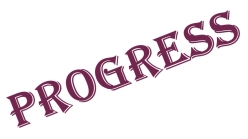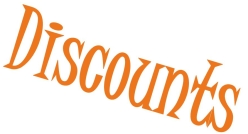The Picture in Their Minds: How Visual Storytelling Builds Brands That Stick









Every small business wrestles with one question: how to stay in the minds of customers long after they’ve scrolled, clicked, or passed by. In a landscape oversaturated with digital noise, visual storytelling has become less of a marketing add-on and more of a survival tactic. It isn’t just about slick logos or trendy color palettes—it’s about shaping emotional connections through images that breathe meaning into a brand. And when done well, it doesn’t just hold attention; it drives loyalty and growth in ways that text alone rarely can.
The Emotional Glue of Image-Driven Narratives
People don’t bond with products—they bond with stories. A strong visual narrative lets a business craft scenes and moments that customers feel part of, even if they’ve never set foot inside a store. Whether it’s a local bakery showing the 5 a.m. flour-dusted hustle or a boutique showcasing behind-the-scenes sketches, images tap into emotions that facts and features rarely reach. This visual empathy creates a deeper imprint, helping small businesses become more than just vendors—they become characters in a customer’s day-to-day story.
Beyond Logos: The Visual Ecosystem of a Brand
A brand’s identity isn’t contained within a logo file. It’s in the way colors echo a mood, how typography tells tone, and what the photos on the website whisper about personality. For small businesses, building a cohesive visual system sets the stage for recognition, consistency, and trust. When the visuals line up with the voice, mission, and values, they begin to do the heavy lifting—signaling what the brand is about without the need for explanation.
Visual Tools That Keep Storytelling Alive
Bringing a brand’s story to life depends heavily on visuals that do more than decorate—they interpret and enhance the message. With AI-powered tools now capable of generating tailored images based on your brand narrative, it’s easier than ever to maintain visual consistency without hiring an in-house designer. A good resource for this is a prompt-based design generator, which can create bespoke motifs that align with your message across websites, social media, packaging, and even printed collateral.
Small Budgets, Big Impact: Scrappy Visual Wins
You don’t need a studio budget to tell a story that lands. Some of the most compelling brand moments come from raw, honest, imperfect visuals—a smartphone shot with heart can go further than a polished but sterile campaign. It’s about intention, not perfection. Small businesses that embrace their scrappy authenticity often come across as more relatable and trustworthy, especially to customers craving something real in a sea of staged content.
Engagement That Feels Personal, Not Performative
Visual storytelling opens a door to dialogue—not just broadcasting, but engaging. When customers see faces, places, and processes, they feel closer to the business and more likely to interact. A photo carousel showing how a product is packed, or a time-lapse of a mural being painted on a café wall, invites curiosity and builds community. This kind of visual transparency breaks down barriers and lets customers feel like insiders rather than outsiders.
Visuals That Guide Without Words
A good image doesn’t need a caption to make its point. For small businesses, this can be a powerful tool to guide users through an experience—on a website, in a storefront, or across social media. Clear, intuitive visuals help answer questions before they’re asked: how to order, where to go, what to expect. When visuals are used thoughtfully as cues rather than decoration, they create a smoother journey that keeps people engaged, not confused.
How Stories Convert
At the heart of it all, the goal is to convert interest into action. Visual storytelling builds emotional momentum that can nudge a browser into becoming a buyer. When people see themselves in the story being told—when they relate to the characters, setting, or values—they begin to internalize that brand as part of their identity. That’s when growth starts to feel less like a chase and more like a natural outcome of resonance and connection.
It’s not about being louder—it’s about being remembered. For small businesses trying to carve out a place in crowded markets, visual storytelling is less of a marketing strategy and more of a language: one that speaks directly to the human brain and heart. It leaves impressions that don’t fade the moment someone closes a tab. Done right, it becomes the reason someone comes back, tells a friend, or chooses the familiar face over the flashy alternative. In that way, every photo, every video, every visual touchpoint becomes not just part of the brand—but part of the customer’s life.
Discover the communities of Baxley and Appling County by visiting the Baxley-Appling County Chamber of Commerce and explore everything from local industry to outdoor adventures in Southeast Georgia!

